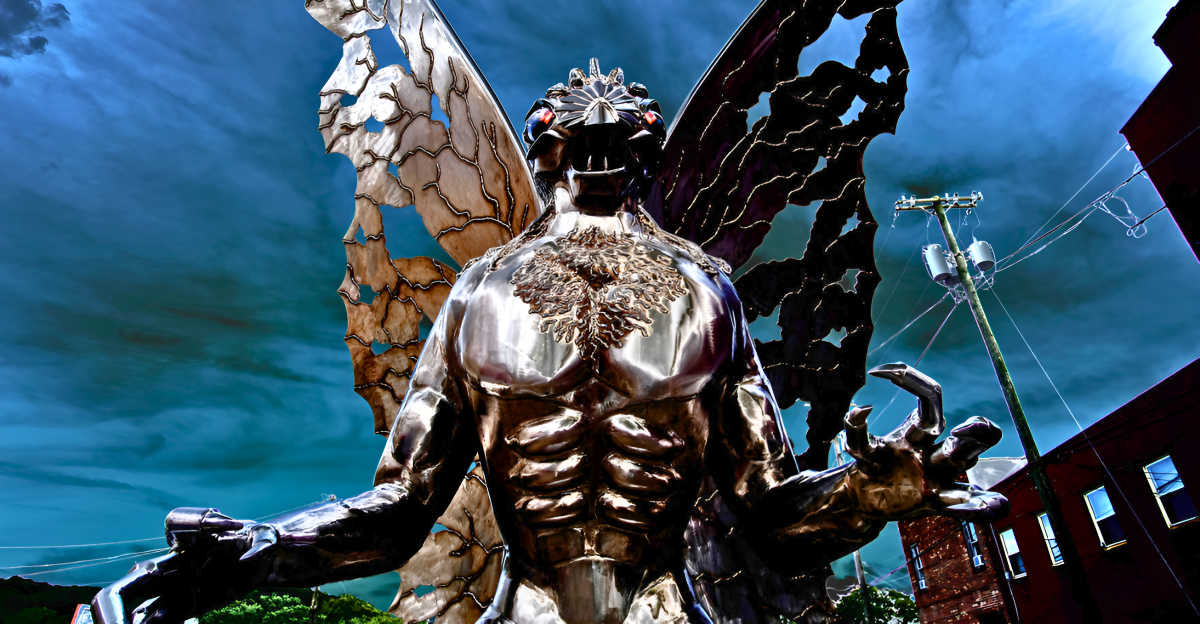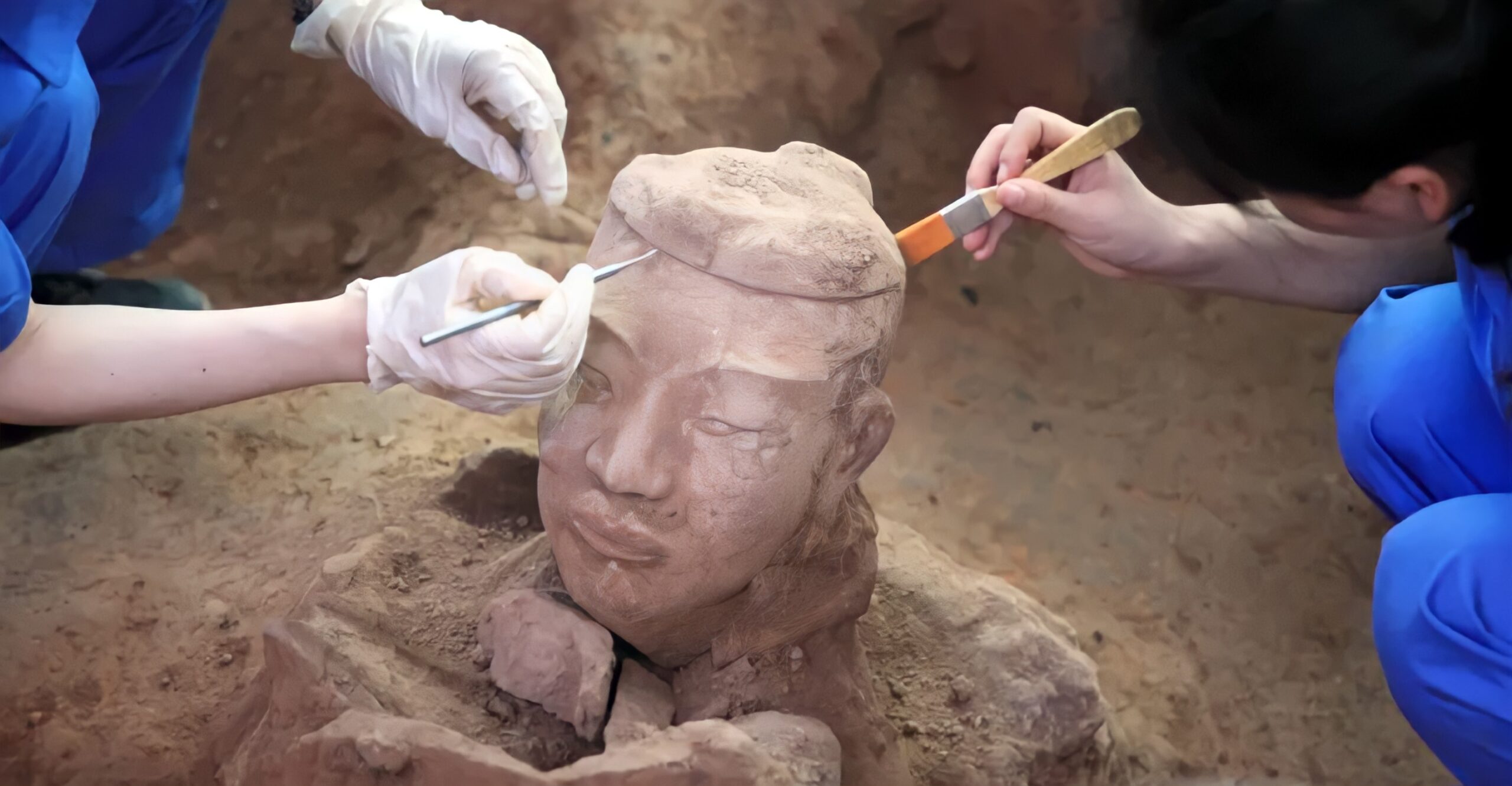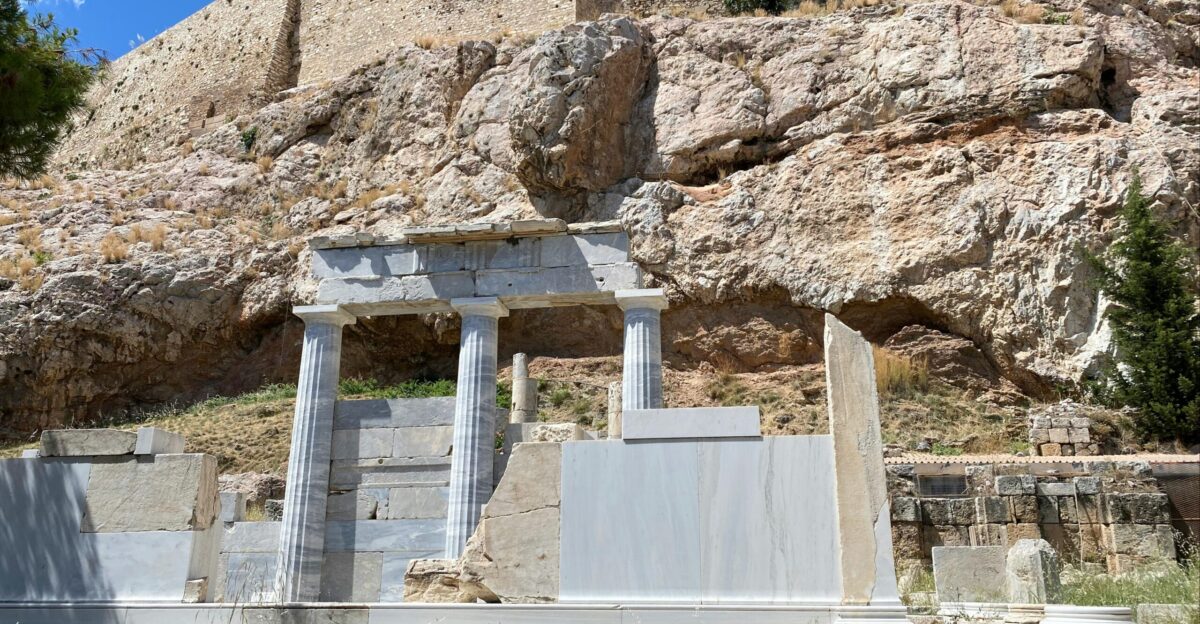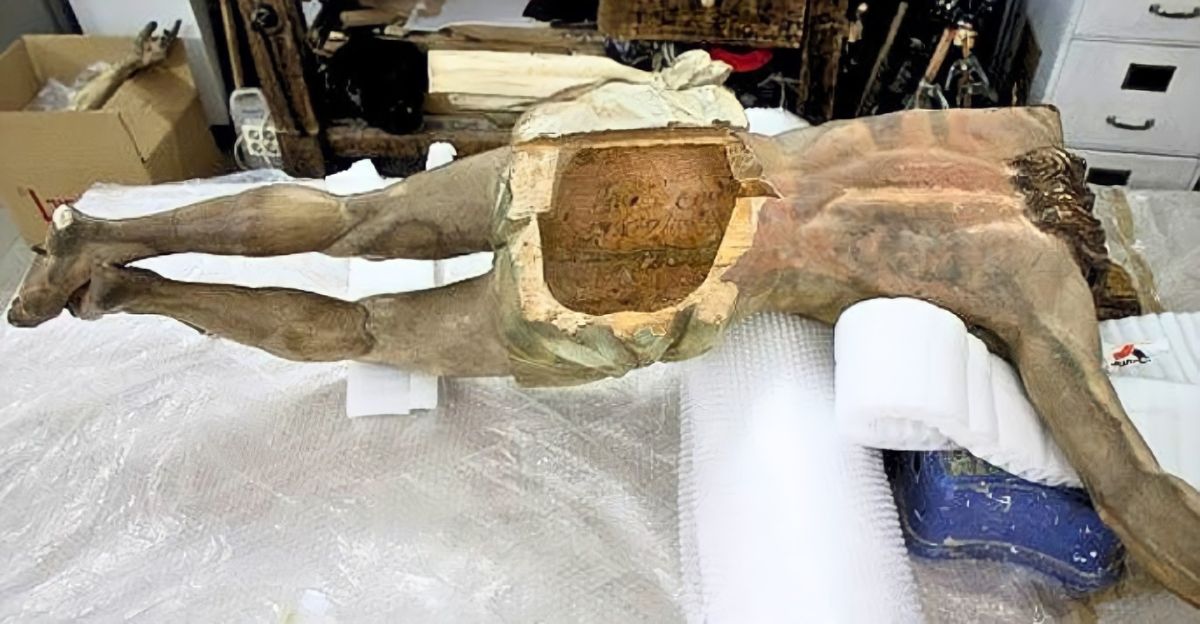
Sometimes, history speaks in frescoes, faded ink, and yellowed parchment. Other times, history whispers in brushstrokes, splintered wood, and old paint.
To most restorers, every statue is a silent relic—until it isn’t. When art restorer Gemma Ramírez began her latest project, it was another day at the studio.
The task? Restore an old crucifix from a rural Spanish church. But as the team examined the statue, something didn’t seem right. And what they discovered would unravel an unexpected chapter from the 18th century.
A Peculiar Weight
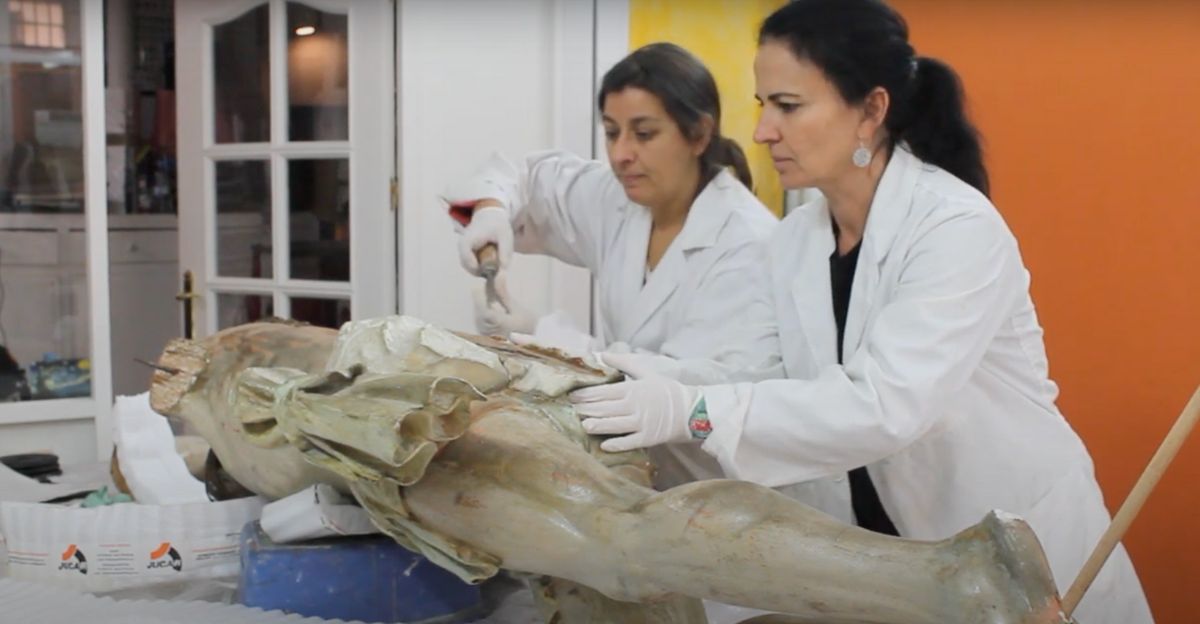
The life-sized, weathered wood carving of Christ seemed oddly heavy. When Ramírez and her colleague picked it up, it didn’t rest well in their hands.
Heavier on one side, it was off-balance in a strange way. Trained in the idiosyncrasies of ancient sculptures, they were accustomed to the odd aberration.
But for some reason, not this time. The feeling persisted—they suspected that something was concealed within. Something that had waited centuries to be discovered.
Not Just Hollow

Though most religious statues from the past are hollow, the group’s focus was drawn to a section of the work: the carved fabric draped over Jesus’ lower half.
A portion of it didn’t appear stationary like the others. Was it broken? No—this was not random deterioration.
It was detachable. A secret panel in a most unlikely location. They knew they had stumbled upon something more than art. It wasn’t craftsmanship anymore. It was secrecy. Intentional, silent secrecy.
The Secret Compartment
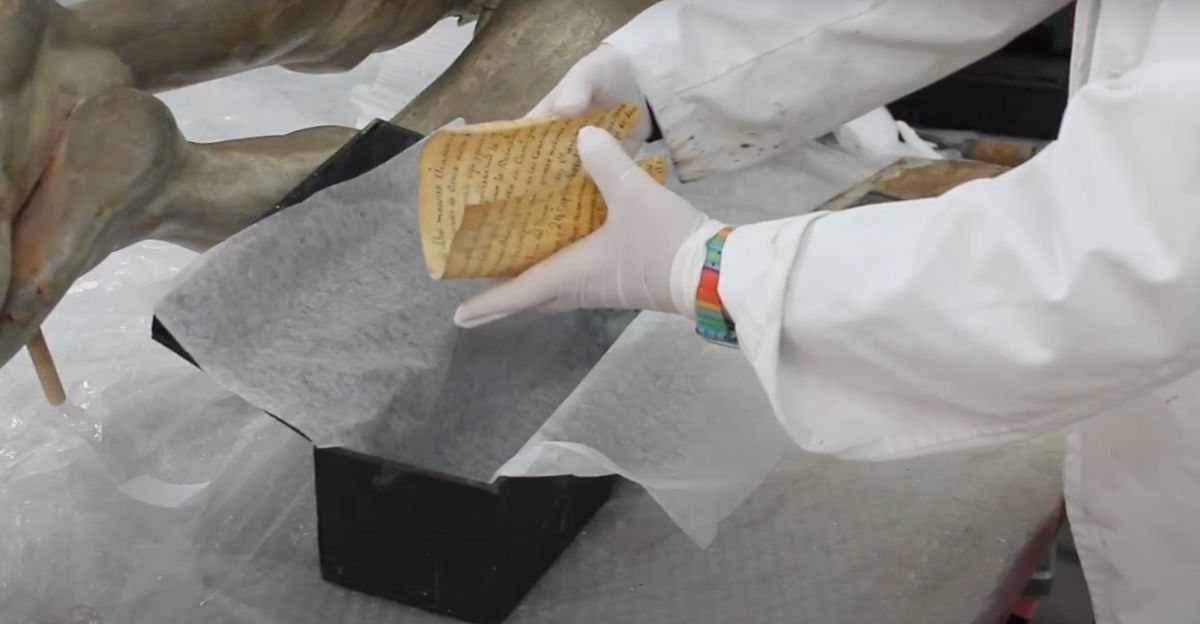
With care and caution, Ramírez extracted the removable panel. A small, hollow space was hidden discreetly in the back of the statue. Inside, they found two frail, folded papers—handwritten, brittle, and long sealed.
It soon dawned on them: this was no repair or forgotten keepsake. It was a message. A message intentionally left there by someone who wanted it to be discovered—but not too quickly. A time capsule in the body of Christ himself.
A Voice From 1777
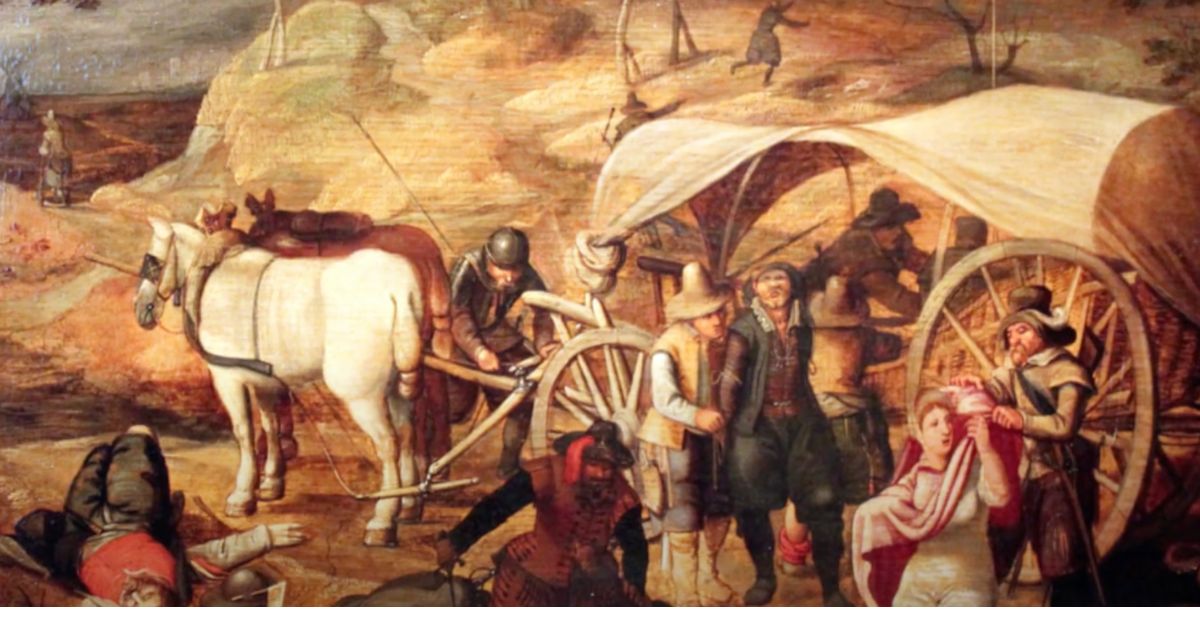
They were signed and dated: Joaquín Mínguez, 1777, a chaplain in the Burgo de Osma Cathedral. Mínguez had penned them as a memoir to leave to posterity.
This was no note. This was a detailed snapshot of life in late 18th-century Spain. A precious rarity: eyewitness testimony from the long dead, addressing us across the centuries from inside a statue before which thousands had prayed silently.
Inside the Time Capsule
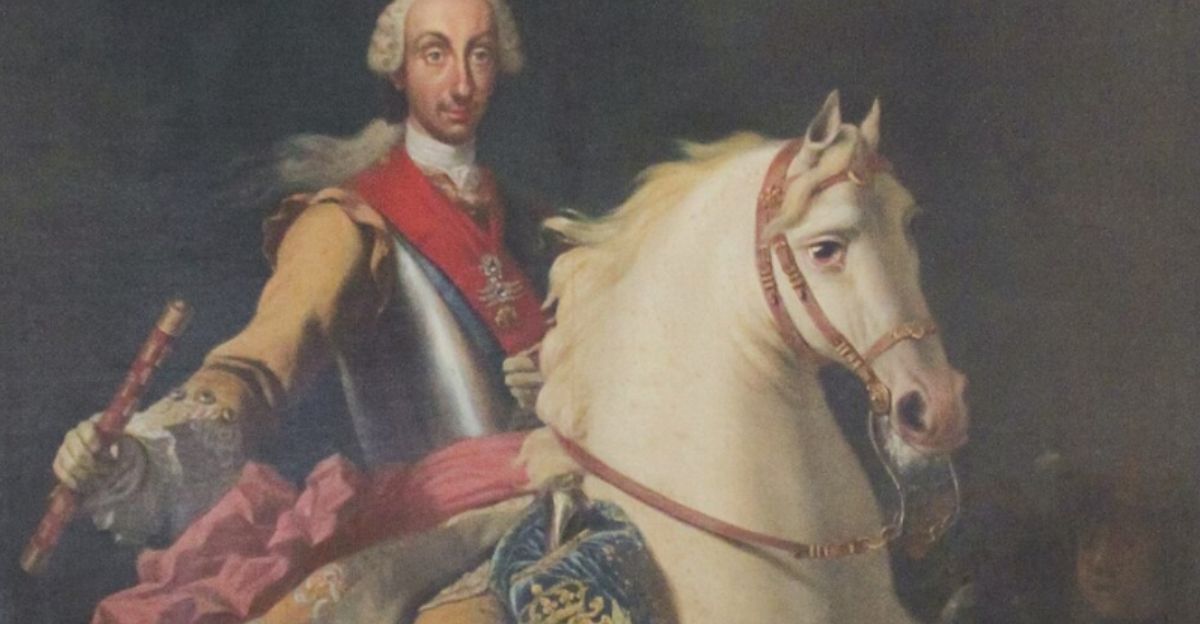
Mínguez wrote intentionally and specifically. He documented the religious and political atmosphere of Spain during the reign of King Carlos III, the continuation of the Spanish Inquisition, and day-to-day realities that are overlooked by most history books.
His writings were anything but esoteric musings—they painted a raw, human picture of the era. His voice did not echo from grand palaces—it came from the pews, the ground, the sickness, and the people.
Life, Illness, and Wine
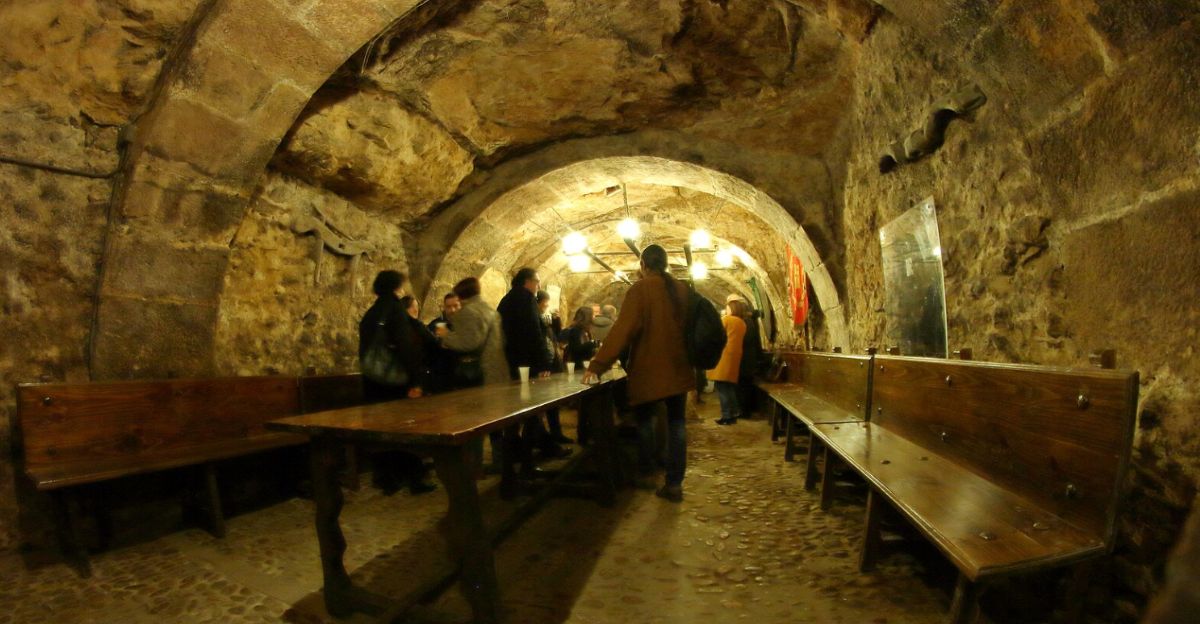
The chaplain spoke of wheat, rye, barley, and oats crops that grew in the area. He spoke of Aranda wine, which is produced to this day.
He spoke of prevalent diseases such as malaria and typhoid fevers, which would last three or four days. It was a difficult life, balanced between labor and worship, illness and celebration.
And yet, in spite of difficulty, villagers had time to play games—to live, if simply, in joy and community.
The Games of the People
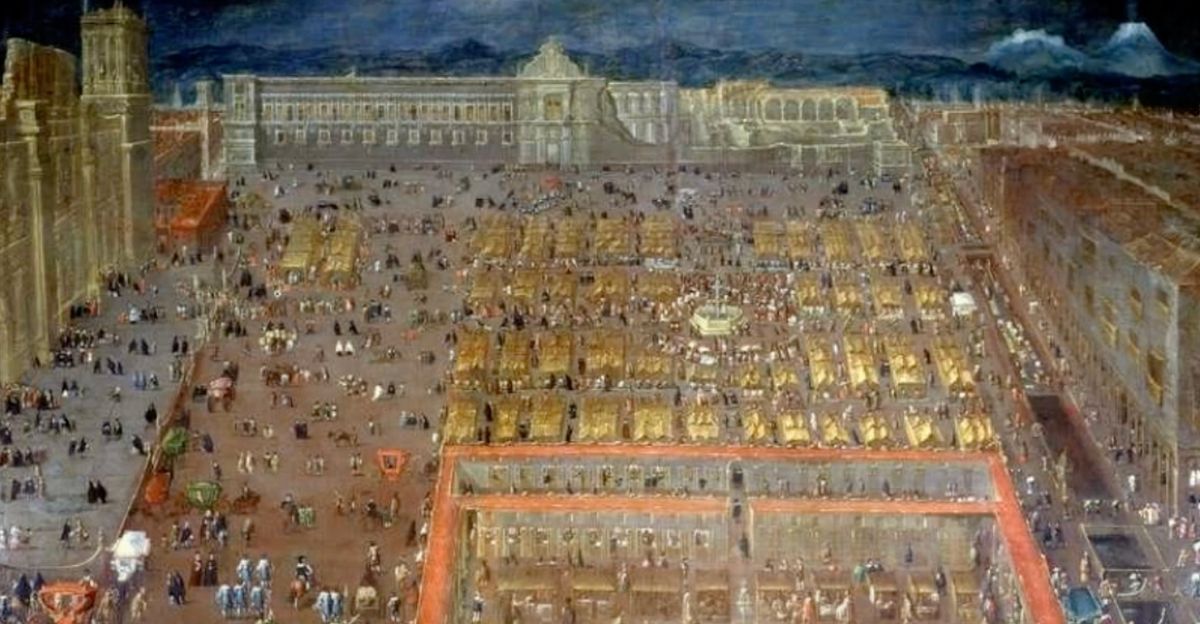
In addition to political news and crop reports, Mínguez provided daily entertainment—”cards, ball, bar and other puerile games.”
The language might sound quaint now, but it speaks an eternal truth: humans can find pleasure even in suffering.
These were the recreations of villagers struggling under the stress of plague, religious surveillance, and survival. The letter conveyed not only news, but real human sensibilities. And it proved that life at the time was not so strange as one might suppose.
The Artist Remembered
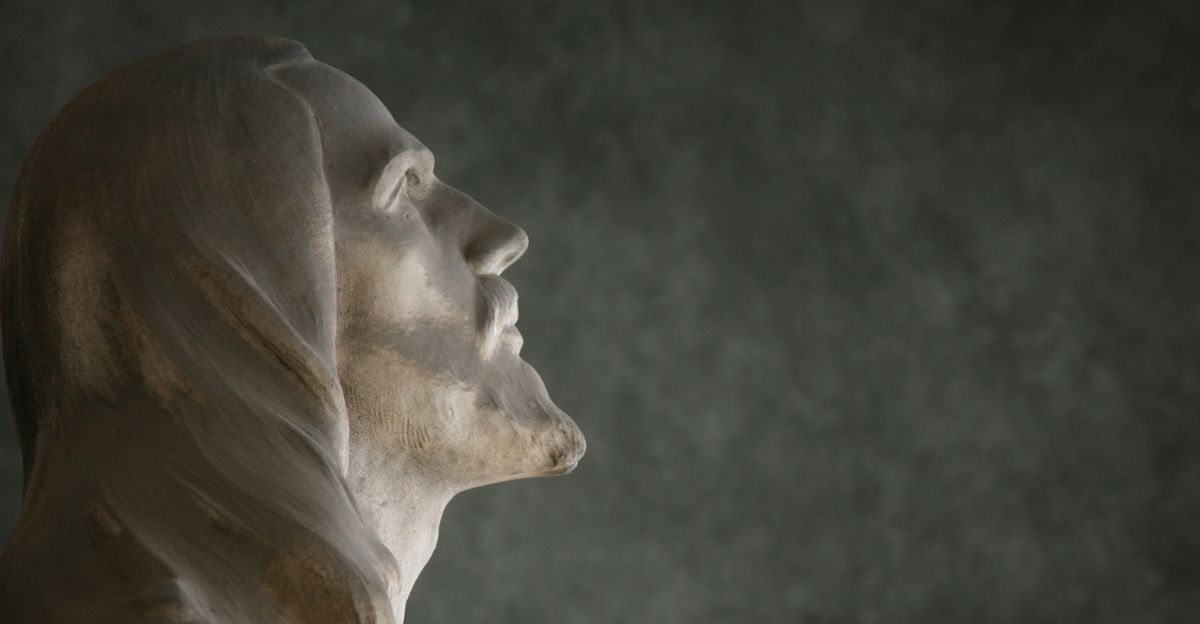
Mínguez also noted the name of the sculptor: Manuel Bal, an otherwise unknown artist whose work had endured for centuries.
By doing so, the chaplain ensured the creator’s legacy in a profoundly intimate manner. Art may outlive its creator, but names are so easily lost.
Due to the actions of one priest, Bal’s name wasn’t—inscribed in ink, just as enduring as the wood itself.
Why Leave the Letters Here?
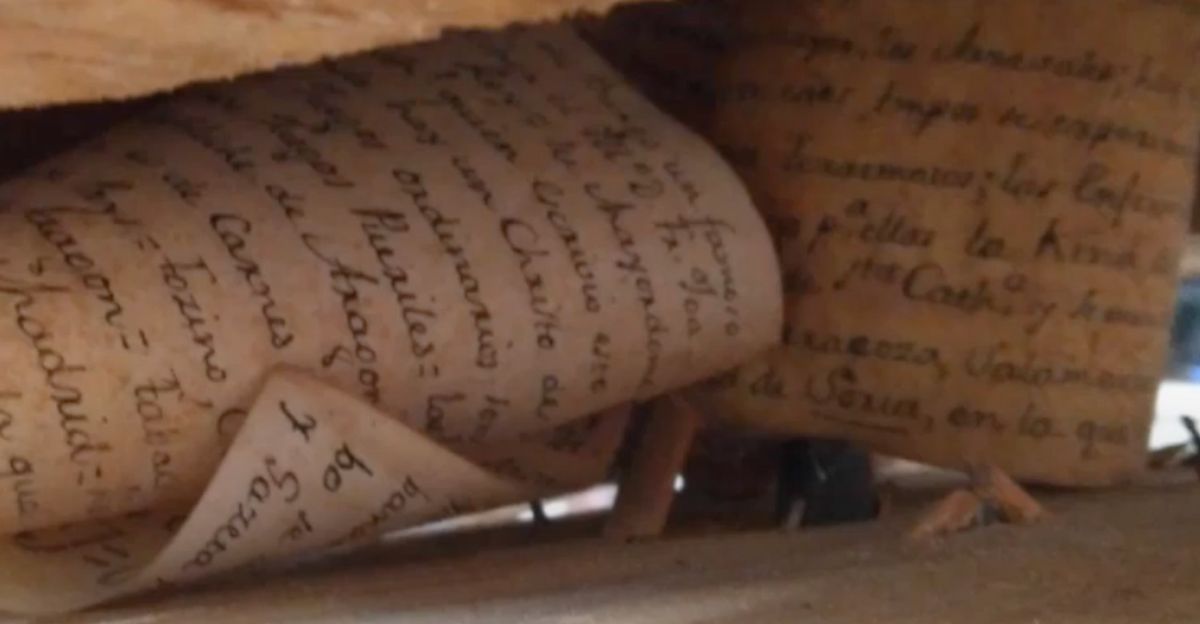
Historians think Mínguez was making a conscious time capsule—not an uncommon practice, but odd in statues.
Historians have discovered letters in walls, under floorboards, even within cornerstone bricks. But within the back of a crucified Christ?
That’s a different matter entirely. Maybe Mínguez selected this place for its sacredness, its immovability, or simply because he knew it would last. Whatever his motive, it has.
Discovery and Preservation
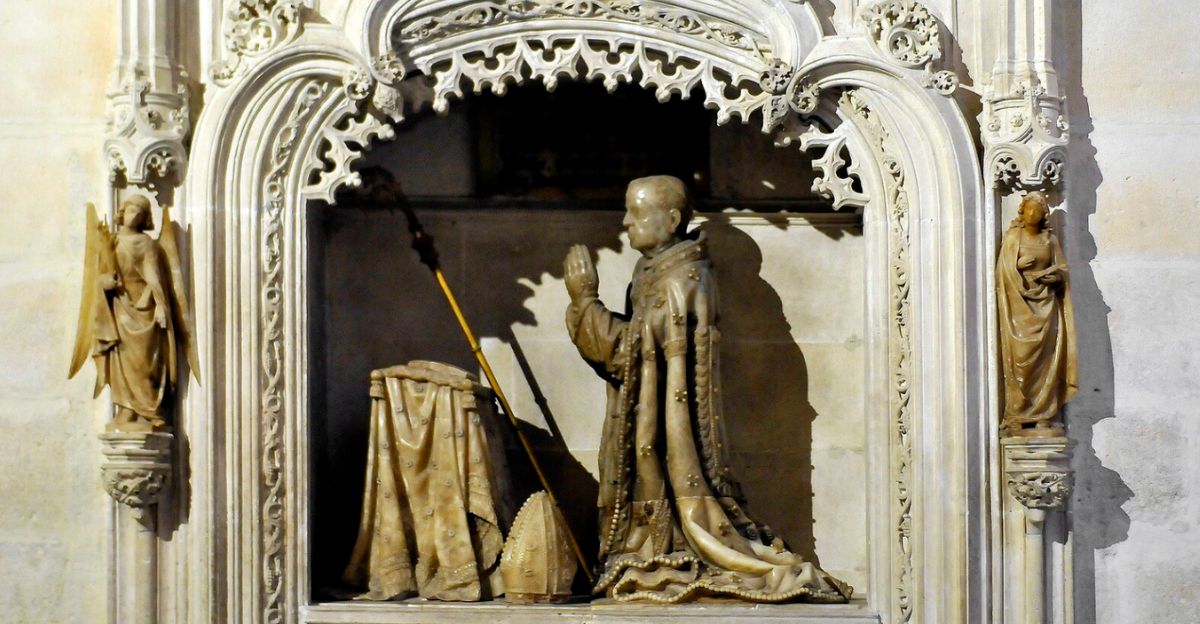
Once the documents had been so painstakingly scrutinized, they were given to the Archbishop of Burgos to be kept safe. Copies, however, were returned to their original place inside the statue.
By doing this, restorers were honoring Mínguez’s original intention. His words would again live quietly inside the statue, waiting for another reader. A full circle—past, present, and future within wood.
A Message in Wood and Ink
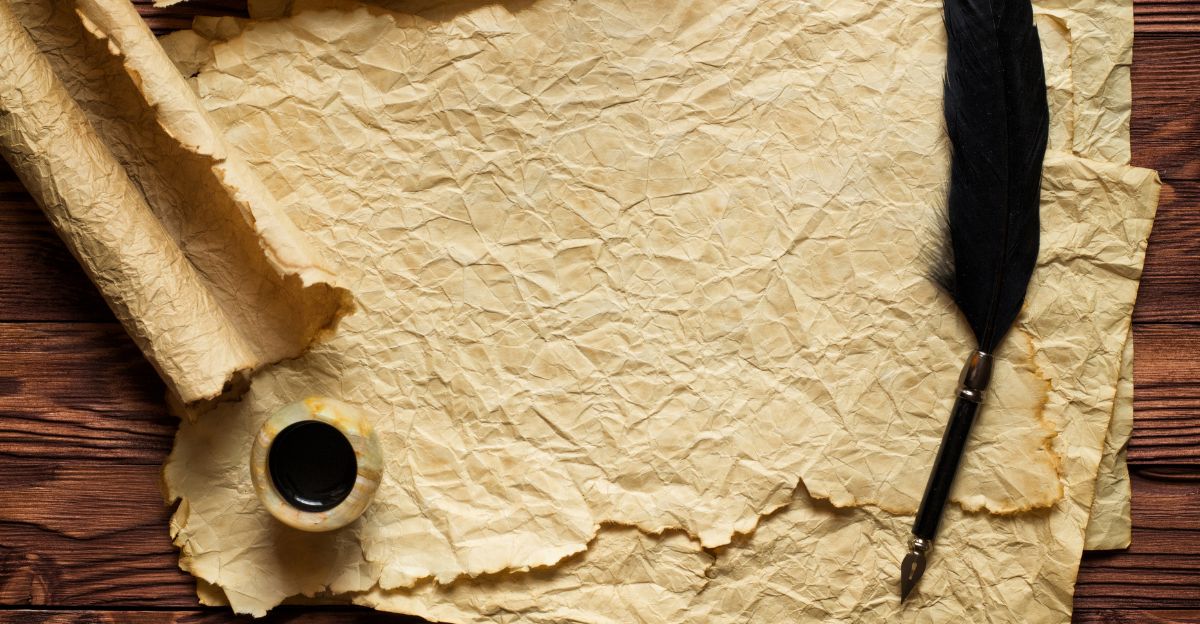
This is not only a story of restoration. It’s one of connection—across centuries, through strangers. Mínguez probably never imagined his words would go viral or be analyzed online.
He simply wished to be heard—some day. Now, his letter exists as both historical document and human artifact.
A simple message, penned in ink, tucked inside a sculpture, and left to the capriciousness of time.
What Else Could Be Concealed?

The discovery at Sotillo de la Ribera has raised the interest of the art world. If a single statue contains a letter within it, then what do other statues contain?
Paintings, altarpieces, icons—might they also contain secrets of the past? The discovery serves to remind us that history is not only documented in books or in museums.
Much too often it lies in material objects and silence, waiting to be revealed by the right hands.
The Past Has a Pulse
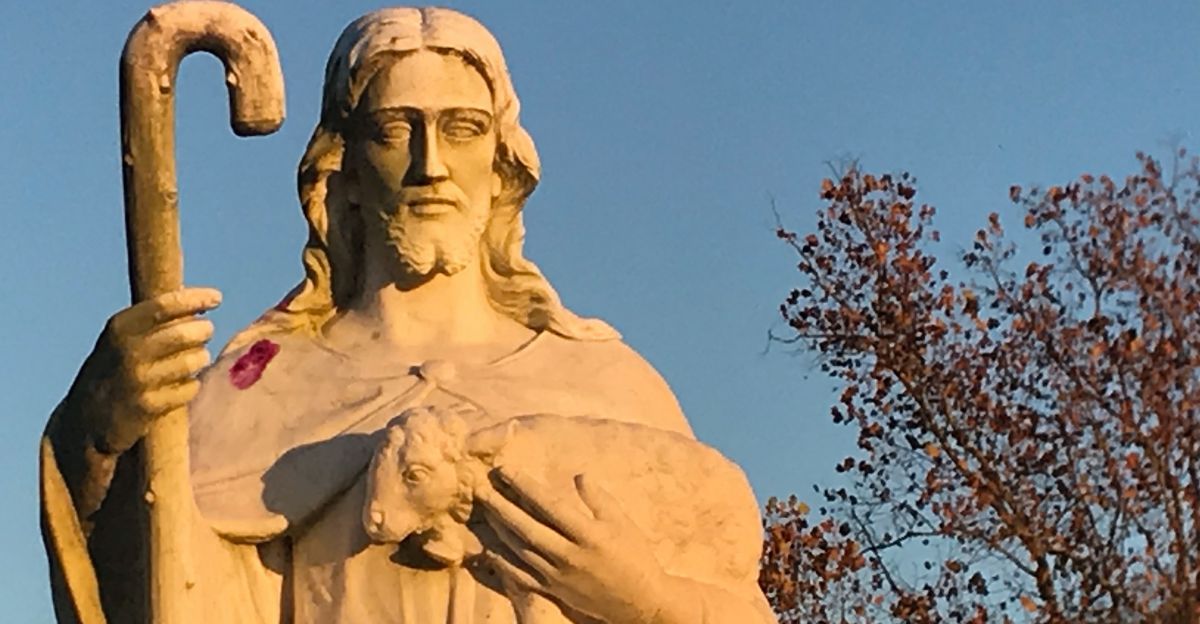
The statue of Cristo del Miserere still stands, but now it holds more than reverence—it holds stories. A priest’s words. A sculptor’s name.
A sliver of Spain’s past, preserved not in stone, but in ink and faith. Through careful hands and quiet curiosity, a forgotten voice was heard again.
And in doing so, we’re reminded: the past isn’t gone. It breathes, listens, and—on rare occasions—speaks.


